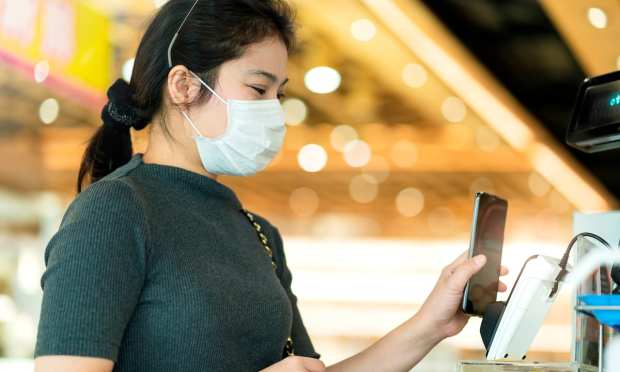Hands Off: Touchless, Contactless Payments Drive Consumer Safety Preferences

That consumers are a bit gun shy when it comes to shopping in physical stores — particularly when it comes to checking out at the point of sale and having to share a touchpad with every other shopper that’s been in all day — is well known a little over a half-year into the pandemic.
But as PYMNTS’ recent data on the subject found, there’s more than one way to avoid physical contact with the POS inside a store — and consumer preferences are trending toward one over the other.
While contactless payment methods in the form of mobile wallets and contactless cards are both becoming more common features, our consumer-survey data strongly indicates while that’s better than making consumers dip their cards, it’s not quite the gold standard when it comes to giving consumers hands-off options for payments. Because as it turns out, safety-conscious customers don’t merely want their payments to be contactless but entirely touchless if at all possible.
By The Numbers: Touchless Vs. Contactless
When PYMNTS and PayPal surveyed approximately 2,400 consumers in September, a majority (57 percent) reported that merchants’ digital payment offerings impacted their willingness to shop in certain stores. The survey data also found that consumers have a demonstrable desire to avoid more traditional in-store payment options such as cash or cards that require physical contact with paper bills or POS terminals.
That reflects itself in preferences for contactless-payment options, with 26 percent of consumers reporting a desire for merchants to accept contactless cards. Some 23 percent also indicated a desire for curbside pick-up.
At first glance, one might be tempted to conclude that contactless payments at the POS are consumers’ leading interest, followed by truly touchless experiences where customers order online and have their goods delivered touch-free to their cars.
But PYMNTS has done a lot of consumer studies in 2020. And if one digs down into a different consumer study performed later in September at consumers’ feelings about the entirety of the contactless versus touchless field of offers, their interests tend toward touchless.
When asked to rank the experiences merchants must provide going forward, the truly touchless commerce options took up two-thirds at the top of the list. For instance, consumers want curbside pick-up (66 percent) and delivery to their door (58 percent).
By contrast, mobile wallets didn’t crack the 25 percent mark when it came to consumers naming their do-or-die preferences.
Are Merchants Getting The Memo?
When we asked consumers about what merchants are adding on when it comes to bulking up that digital service offering, respondents tended to agree that retailers have dedicatedly made the digital pivot.
Some 79 percent of those surveyed reported that the merchants they patronize have added or improved their digital-first and touchless experiences during the pandemic. The two main areas of improvement cited were curbside pickup (55 percent) and contactless payments (51 percent).
Based on our data taken across various surveys, that indicates merchants have gotten the memo on consumer preference not to tap directly on a POS and make as many changes as possible to give shoppers the option to never do so again.
Will touchless will continue to run ahead of contactless — and perhaps even leapfrog in entirely when it comes to how consumers prefer to pay?
It’s possible to imagine contactless could grab the upper hand in a post-vaccine world where consumers are a bit more enthused about going into stores at all. But given that a vaccine is probably at least several months away and COVID-19 case numbers are spiking all around the U.S. and around the world, it seems that entirely touchless payments will enjoy an edge in the race for quite a while yet to come. In fact, consumers could favor touchless payments well into the future depending on how much their preferences change on how they like to shop in-store between now and a vaccine’s development.
